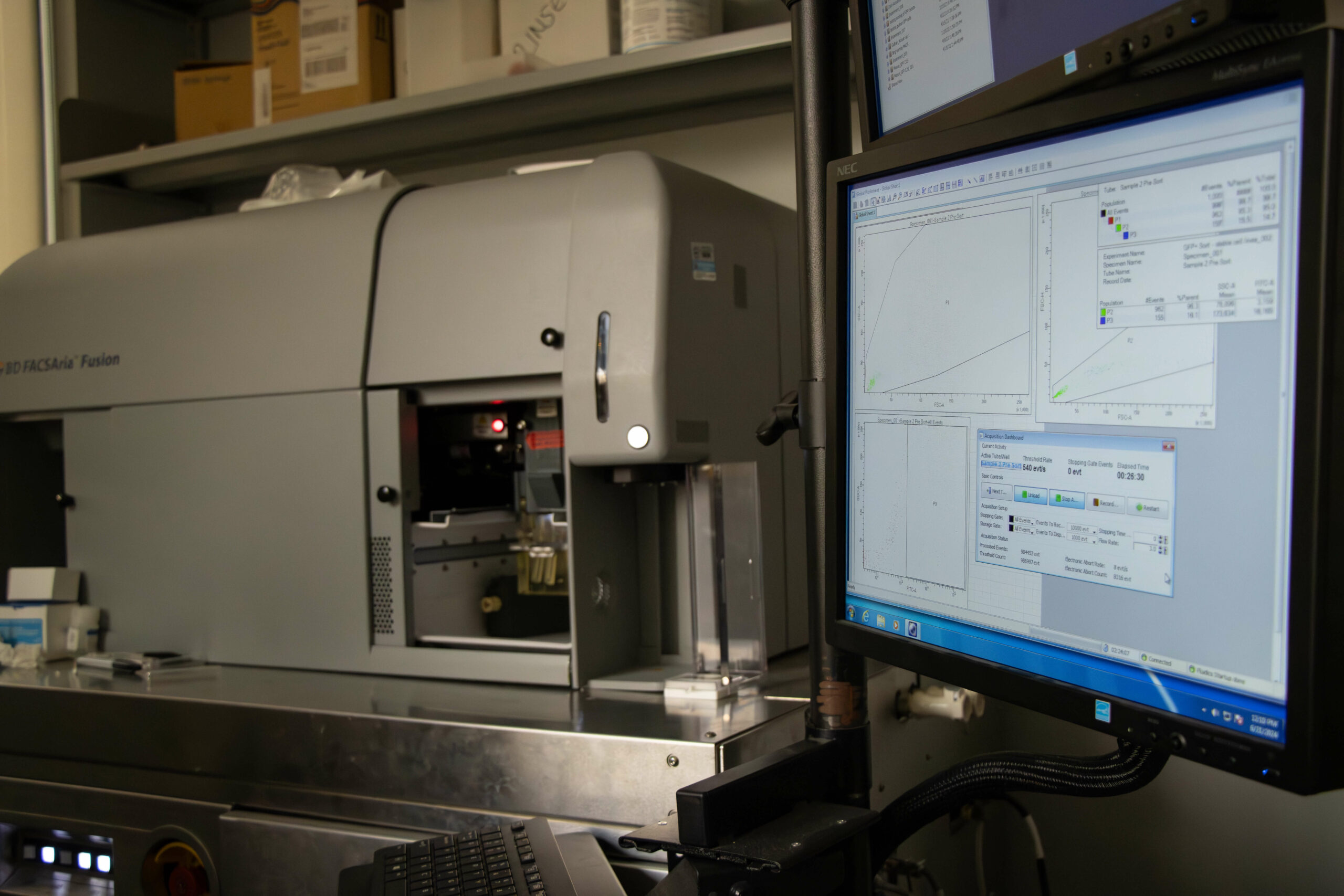The FACS core consists of two machines, one each for cell analysis and cell sorting. The BD FACS Symphony A3 is a four-laser, 16-channel flow cytometer with four laser lines 405nm, 488nm, 651nm and 637nm, and is used to identify and analyze rare cell types and events, averaging around a million analyzed cells every 30 seconds. It includes software for the analysis, proliferation and apoptosis of cells. The BD FACSAria Fusion is a four-laser, 15-channel cell sorter with 405nm, 488nm, 561nm and 640nm laser lines, and uses UV, Violet, Blue, Yellow/Green and Red lasers to detect up to 18 colors in a sample. This instrument can simultaneously sort four different populations into 1.5, 5 or 15 mL tubes or 96-well plates. BD FACSAria Fusion has precisely integrated fluidic and optical systems to maximize signal detection. This machine averages a million sorted cells every 30 seconds.




